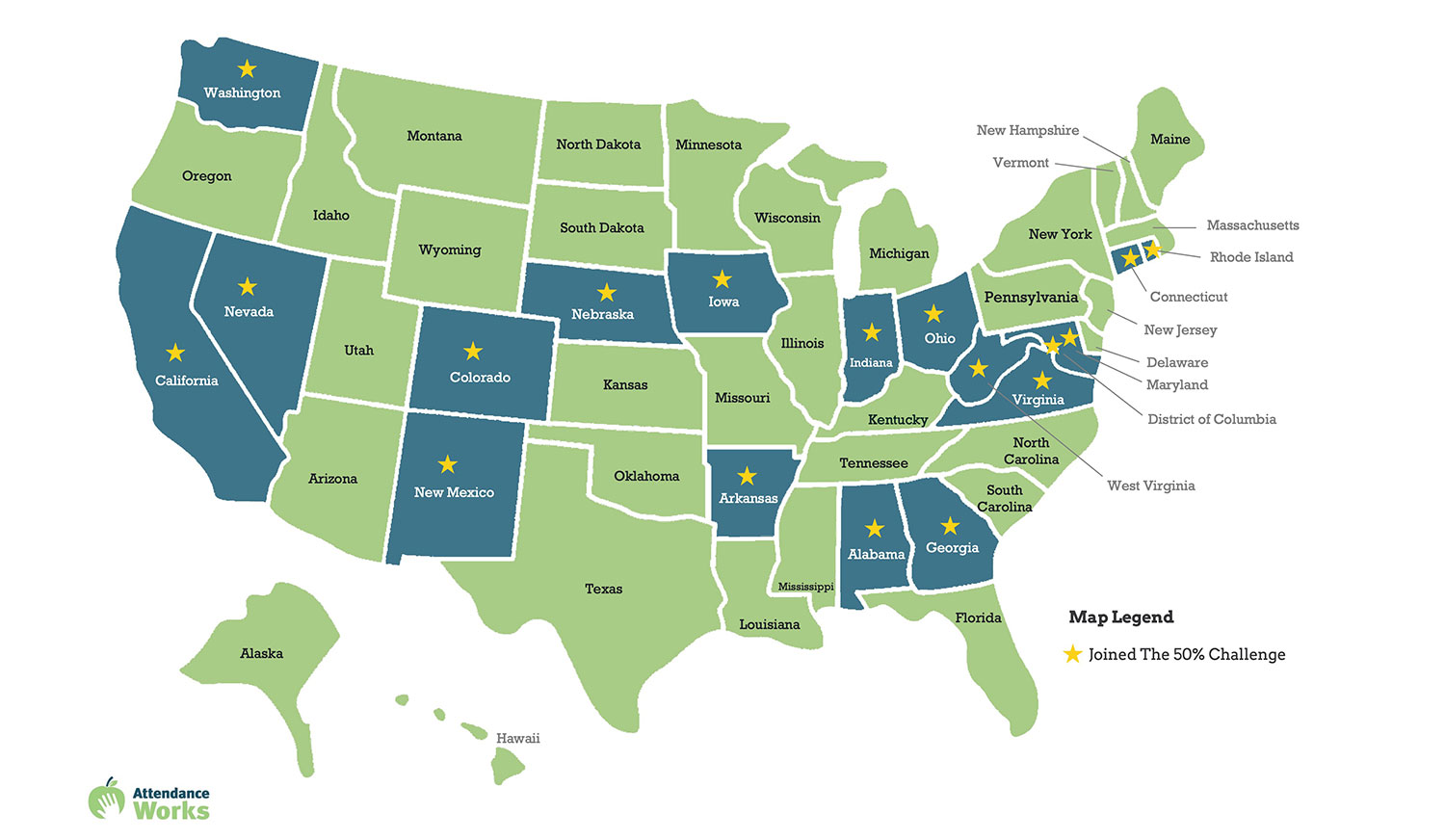Join the Challenge! Cut Chronic Absence In Half
We challenge everyone to embrace this bold yet achievable goal. Turning around this nation’s attendance crisis will require not just goals, but concrete plans, perseverance and follow through.
Chronic absence almost doubled from one out six to almost one out of three students during the Covid-19 pandemic. Every state in the country is experiencing this dramatic rise in too many students missing too much school. Emerging data reveals it remains stubbornly high.
Chronic absence (missing 10% of school for any reason) is affecting students and families from every economic level, ethnicity and type of community: urban, suburban and rural. It makes it harder for students to develop literacy and math skills by third grade, achieve in middle school and graduate from high school. High levels of absenteeism also can harm student health and well-being as well as readiness for work and college.
Chronic absence doesn't just hurt the absent students. It impacts the learning environment, making it harder for teachers to teach and all students to learn. What’s more, chronic absence exacerbates existing opportunity gaps in our schools.
We want to thank Denise Forte, CEO of The Education Trust, and Nat Malkus, senior fellow with American Enterprise Institute, for their partnership as we launched the national chronic absence challenge.
View the livestream of "Coming Together on Chronic Absence," where we announce the challenge and state and district leaders discuss how they are improving engagement and attendance.
The persistently high chronic absence rates tell us that this problem will not simply go away on its own. Addressing this issue in the aftermath of the pandemic is a shared responsibility that requires all of us working together.
In this spirit, we challenge everyone to embrace a bold yet achievable goal: cut chronic absence rates from pandemic highs in half over the next five years. Making progress will require not just goals, but strategic actions, a long-term commitment, and a willingness to reassess and revise plans or approaches that are not effective.
Calling State Leaders
Find the list of states that have signed on to the challenge.
As we move towards achieving our bold goal, Attendance Works will first develop resources to assist states. Our work over the past 10 years shows us that state leaders are uniquely positioned to take on this challenge. States leaders and policy makers can raise awareness of the dire nature of student attendance in schools across their state, mobilize resources to improve engagement and attendance and address barriers to getting to school. States can offer guidance and offer technical assistance and peer learning opportunities to build the local capacity of districts and community partners to adopt effective strategies for improving attendance.
If you are a chief state school officer (or their representative) and you are interested in committing to this challenge, please contact Attendance Works Executive Director, Hedy Chang, Hedy@attendanceworks.org
A Roadmap for Tackling Chronic Absence
Every state will need to develop its own plan based on a deep understanding of local realities and available assets. Our road map helps states organize teams, determine their goals, choose appropriate strategies, and work with partners to craft and implement their plans to improve engagement and attendance. We’ll soon share tools to help states determine their reduction goal and identify which student groups will need additional support, and we’ll offer bright spots of several states that are making gains to bring their attendance closer to pre-pandemic levels. Check out a bright spot story featuring Connecticut's positive, systemic approach to improving attendance, and a report from FutureEd describing Rhode Island's state wide strategy.
Halving the chronic absence rate requires all-hands-on-deck. Join us and make addressing chronic absence a priority in every state, district and school.
